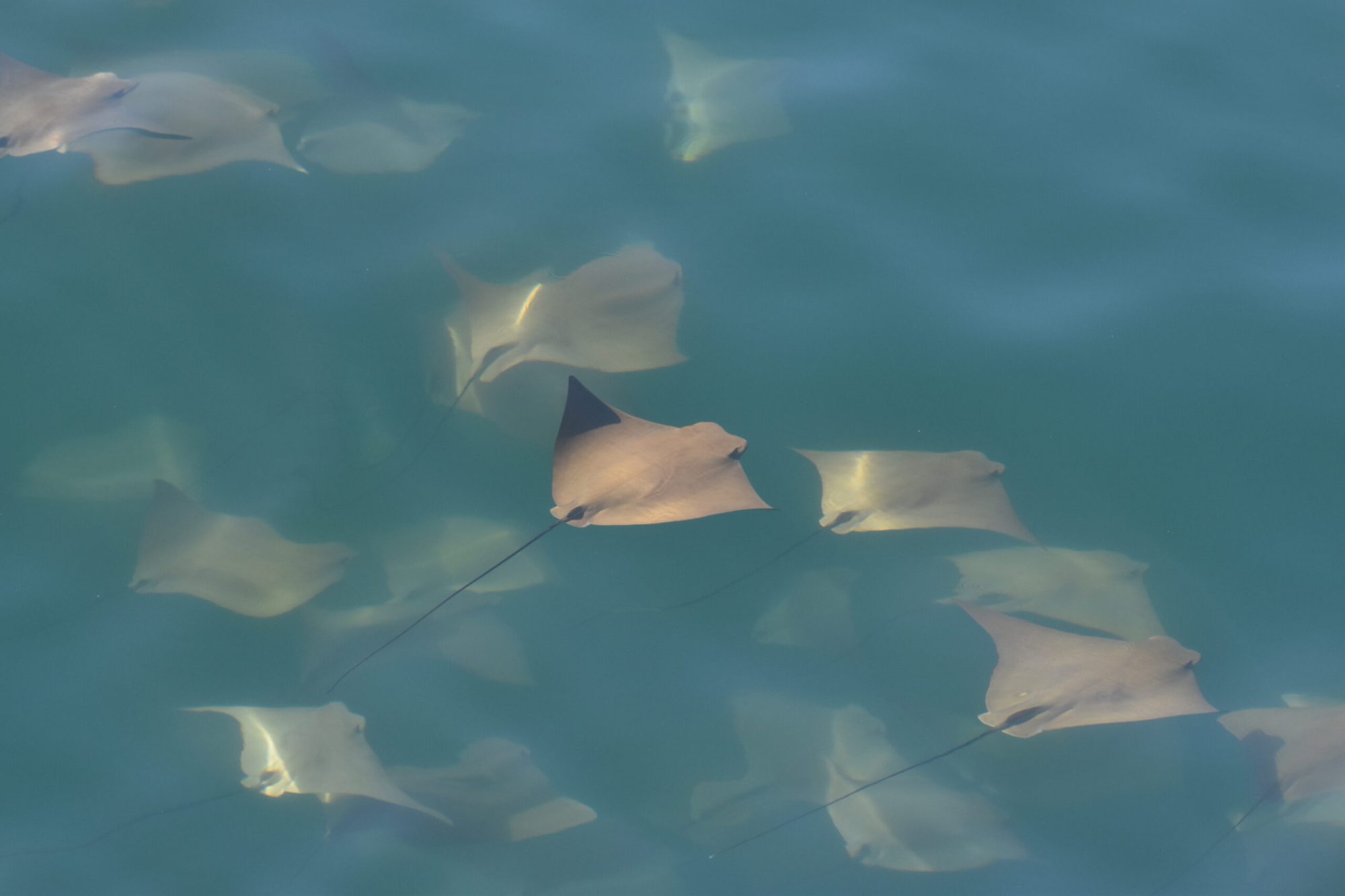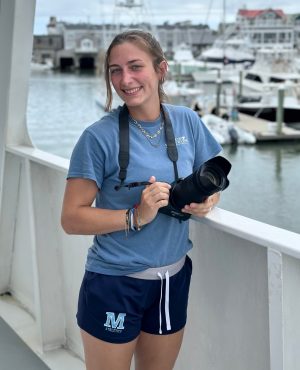Doing the Right Stings – Saving the Cownose Ray

I have only ever been able to see skates and rays in aquariums and through photos, but never with my own eyes. While being a Research Intern at the Cape May Whale Watch and Research Center I had the amazing opportunity to see my first ever ray, well actually the first hundred rays of my life. It was the Cownose Ray (Rhinoptera bonasus), and they completely surrounded us; it was such a surreal moment that I’ll never forget!
They are a medium to large cartilaginous fish species having a width of two to three feet. These rays have a golden to dark brown dorsal surface and white to yellow ventral surface with a kite-shaped body ending with a long tail with one to two tail spines and equipped with mild venom. Their head is what gives them their unique name due to the distinct lobes on the front edge. Their plate-like teeth are ideal for crushing crustaceans and mollusks, but commonly feed on soft shell clams and thin-shelled bivalves; they find their prey by using mechano- or electro-receptive detection. They are commonly found in shallow water swimming close to the surface to minimize their chance of being stepped on by a human. They are distributed throughout the western Atlantic Ocean from New England to Florida, throughout the Gulf of Mexico migrating down towards Brazil, and on a small portion of the Western Atlantic from Mauritania to Guinea (Kittle).
Cownose rays are known to migrate long distances in large schools up to ten thousand at a time and this coincides with their breeding period, which is from June to October. This species has a very slow reproductive rate, giving birth to usually one pup a year. Maturity is between 5 and 7 years with a lifespan of 16 to 18 years, giving few chances to produce a pup.
Unfortunately, these rays had raised concern about harming oyster beds due to predation on them coupled with declining populations in the Chesapeake region. It was once thought this was only because of the ray, and as a solution, there were hunting tournaments on them to reduce their populations to stop the oyster decline. With time it became clear that disease and pollution reduced their grass bed habitat causing the oysters to decline and that hard clams were only a small part of the rays’ diet and only fed on them when other food sources were low (Kittle). Once the truth was discovered the hunting tournaments were stopped and bills were signed into law in some states to protect them further (Felver, 2017). In addition to this, they are also vulnerable to overfishing and disregarded for when caught as bycatch. Due to the hunting and overfishing of them, it has led the Cownose Ray to be listed as threatened by the IUCN Red List. Today it seems like the populations are increasing, but they still need to be protected. Learning about what this ray has been through in its history makes me appreciate seeing them in a large number off of the New Jersey coast even more!

-Alainna Sharp
Research Intern at Cape May Whale Watch and Research Center
University of Maine ’22
References:
Felver, Rachel. “What Do We Really Know about Cownose Rays?” Chesapeake Bay, 28 Feb. 2017, www.chesapeakebay.net/news/
Kittle, Kimberly. “Rhinoptera Bonasus.” Discover Fishes, www.floridamuseum.ufl.edu/
